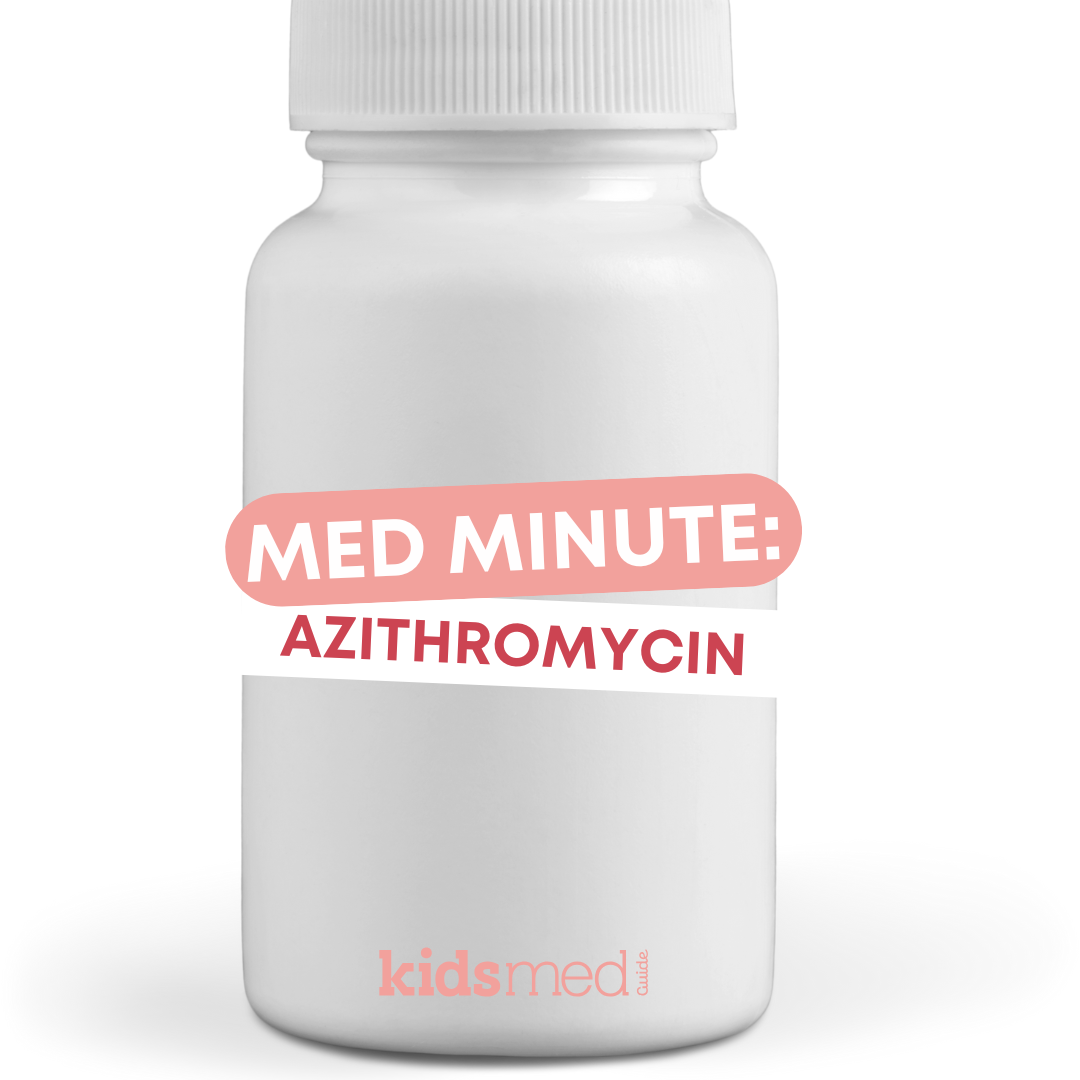Med Minute: Azithromycin (Zithromax)

This Med Minute guide discusses azithromycin (Zithromax), an antibiotic frequently used for pediatric patients aged 6 months and older to treat bacterial infections. It belongs to the macrolide class of antibiotics. In the pediatric world, azithromycin is primarily prescribed for patients with a bacterial infection and a penicillin allergy. Continue reading for quick facts on uses, dosing, side effects, and tips for administering it to your child.
What's Azithromycin Commonly Used For?
- Treating bacterial infections
- The primary choice for treating pertussis (whooping cough), atypical pneumonia, bacterial sinusitis, and certain pelvic infections in teens and young adults.
- For patients allergic to amoxicillin, azithromycin is a preferred alternative for treating strep throat and pharyngitis/tonsillitis, as well as acute otitis media (ear infection) or community-acquired pneumonia.
How Does Azithromycin Work?
- It kills bacteria by stopping them from synthesizing the new proteins needed for replication.
- Azithromycin is a “concentration-dependent killer” that eliminates bacteria relatively quickly. Therapy courses are typically shorter, ranging from 3 to 5 days, but they may be extended for more serious infections.
What's The Dose of Azithromycin?
- It varies based on age, weight, and the condition being treated.
- Azithromycin is given once daily.
- There may be a large initial dose, followed by a smaller maintenance dose. A typical example of a loading and maintenance dose is 10 mg/kg on day 1, followed by 5 mg/kg once daily from days 2 to 5.
What Are the Most Common Side Effects?
- Diarrhea (may be delayed and occur after therapy concludes – contact your doctor if this occurs)
- Nausea or vomiting
- Abdominal pain
- In infants, it may cause poor feeding and irritability. Contact your doctor if this occurs.
How Should My Child Take Azithromycin?
- Take with or without food, taking with meals may reduce stomach upset
- Shake the suspension well and use the measuring device provided
- Do not take with antacids or anything containing aluminum or magnesium (doses must be separated by at least 2 hours)
- Store the liquid suspension at room temperature (read the pharmacy label; instructions may vary by manufacturer)
The information in this guide does not include a comprehensive list of all possible side effects, contraindications, or warnings associated with drug use. This content is for educational and entertainment purposes only and aims to quickly provide caregivers with the most common counseling points for pediatric medications. It does not replace professional medical advice, nor does it supersede information found on a pharmacy label or drug package insert. Always read the complete package insert before administering medication to your child. Consult your healthcare provider for medical guidance, and call 911 in case of an emergency. Kids Med Guide is not liable for your interpretation or reliance on this material. You assume full responsibility for its use and any resulting decisions. For details, please see our Privacy Policy and Medical Content Policy.
The following reference was used to compile this information:
DailyMed—AZITHROMYCIN- azithromycin monohydrate suspension. (n.d.). Retrieved June 18, 2025, from https://www.dailymed.nlm.nih.gov/dailymed/drugInfo.cfm?setid=071e71b8-bb53-4075-9bda-2ec48affa018#S12.4



